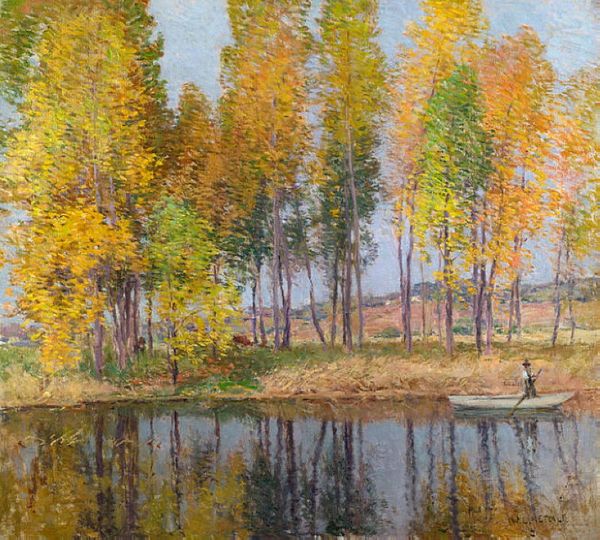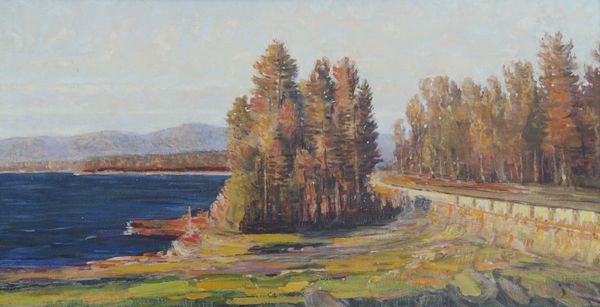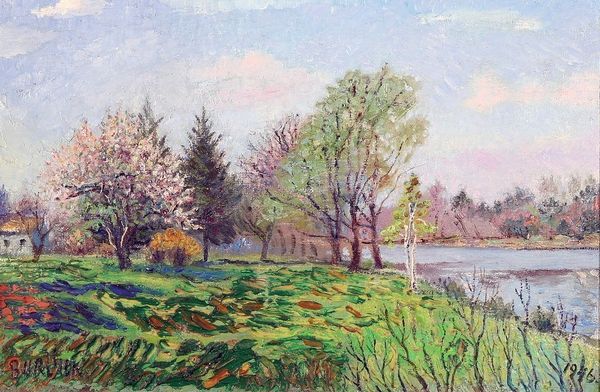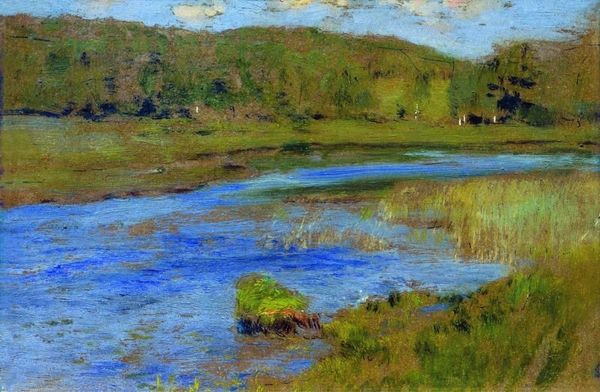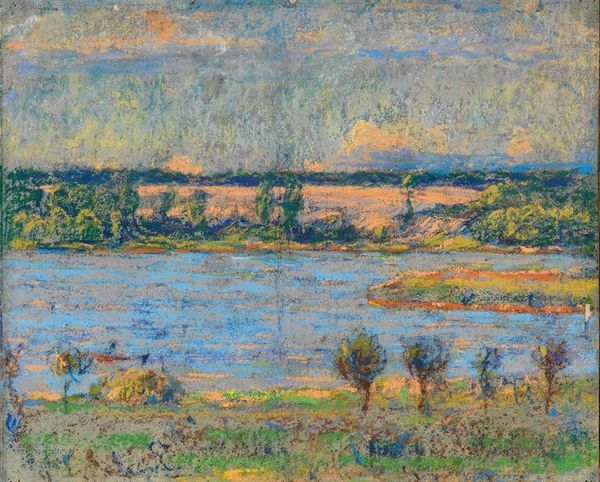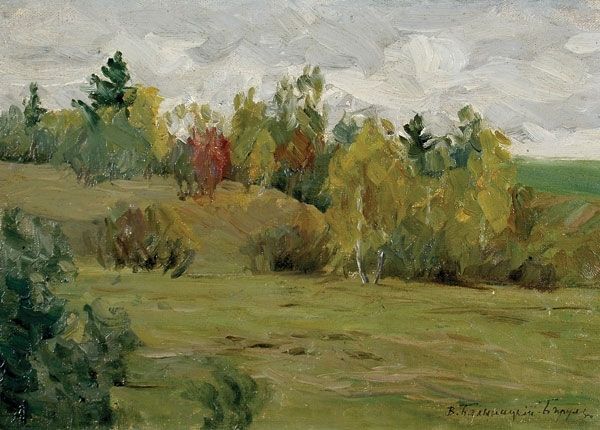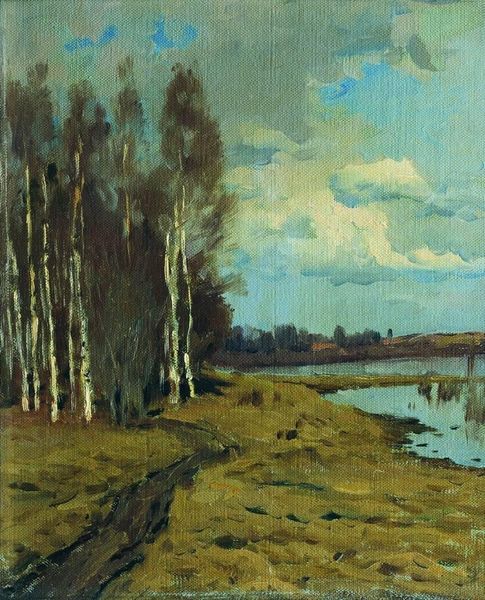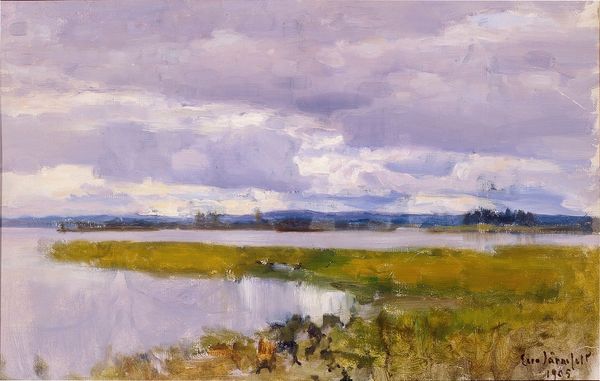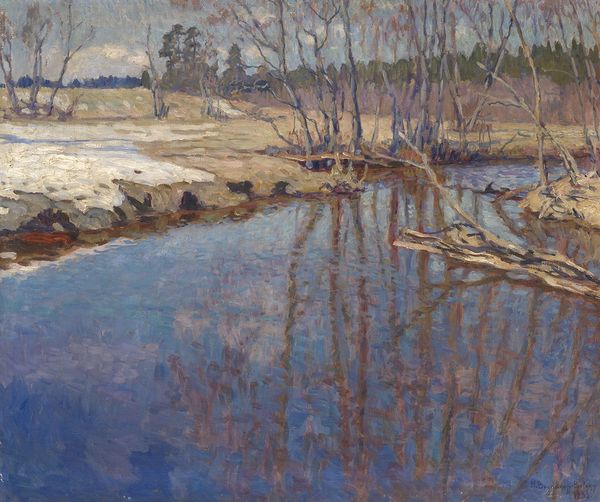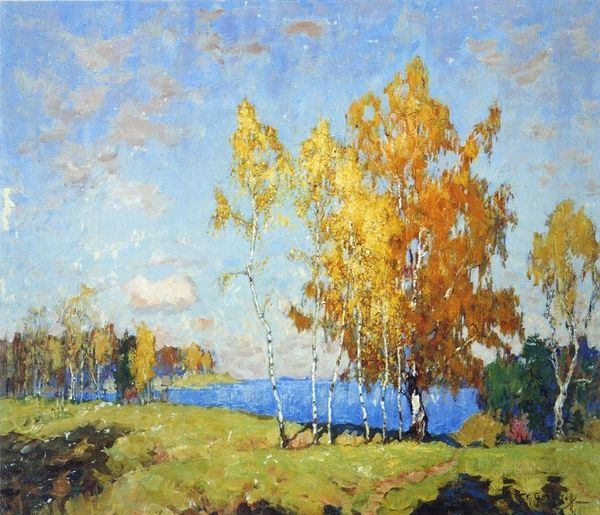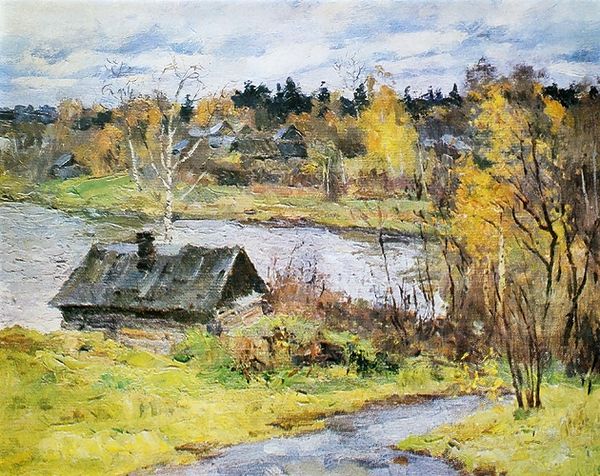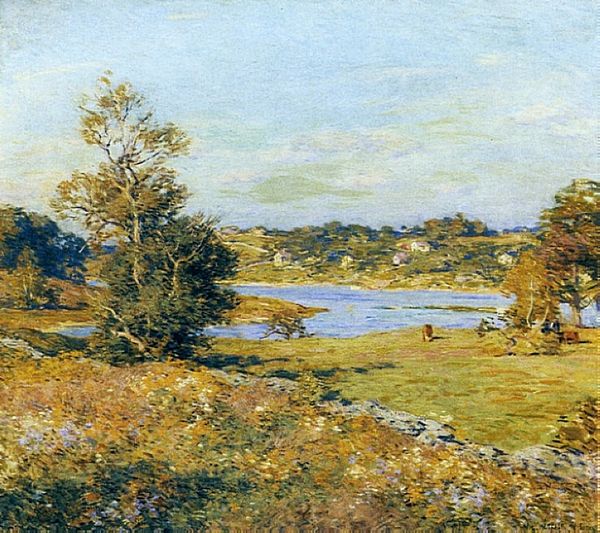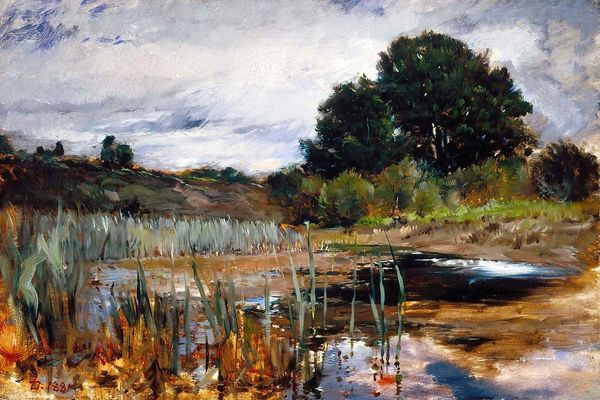
tempera, painting, oil-paint
#
tempera
#
painting
#
landscape
#
oil-paint
#
landscape
#
river
#
naturalism
#
realism
Copyright: Victor Puzyrkov,Fair Use
Curator: What strikes you about this piece? I find it immensely peaceful. Editor: Oh, that's easy. Nostalgia, pure and simple. It smells like autumn and feels like a Sunday afternoon nap I don't want to end. Tell me about it, please! Curator: This is "Last Rays" by Victor Puzyrkov, completed in 1978. He worked with both oil and tempera paint, which is interesting because they have such different properties and usages. He has used quite visible brush strokes for a naturalistic style, quite common during the Realist art movement that took off after the mid 19th century, when art moved away from depicting drama, religion, and history in favor of everyday sceneries. Editor: Those brushstrokes are the key, aren't they? See how they dance on the water, making it ripple and shimmer? They don't just paint the river; they evoke the sensation of light on water. It's more impressionistic than realistically depicted, a true impression. Curator: True. Remember that Soviet Realism was, at that time, the only publicly accepted artistic style. But, Puzyrkov moved a bit towards naturalism. The goal, especially in landscape painting, was often to depict the grandeur and beauty of the Motherland, aligning art with a sense of national pride and connection to the land. Editor: Well, he absolutely nails that feeling. It is a quintessentially Russian landscape, so simple yet so profound, right? You're right—there's pride in every dab of that oil paint, pride and a little melancholy, like a perfect love song that makes you smile and weep at the same time. Curator: Exactly. The colors, muted but vibrant, also point towards a commentary on fleeting beauty and changing times that's present during fall—that’s both melancholic and beautiful. It represents a specific kind of officially sanctioned beauty that reinforced national identity. Editor: Absolutely! Looking at the history enriches the view…it’s beautiful work that speaks beyond words, as it reflects the quiet soul of the land, just before the darkness takes over the scene. Curator: Well said. It leaves me thinking about the intersection of art, ideology, and individual expression. Editor: For me, it’s a potent image that stirs a simple yearning for calm and recollection.
Comments
No comments
Be the first to comment and join the conversation on the ultimate creative platform.
